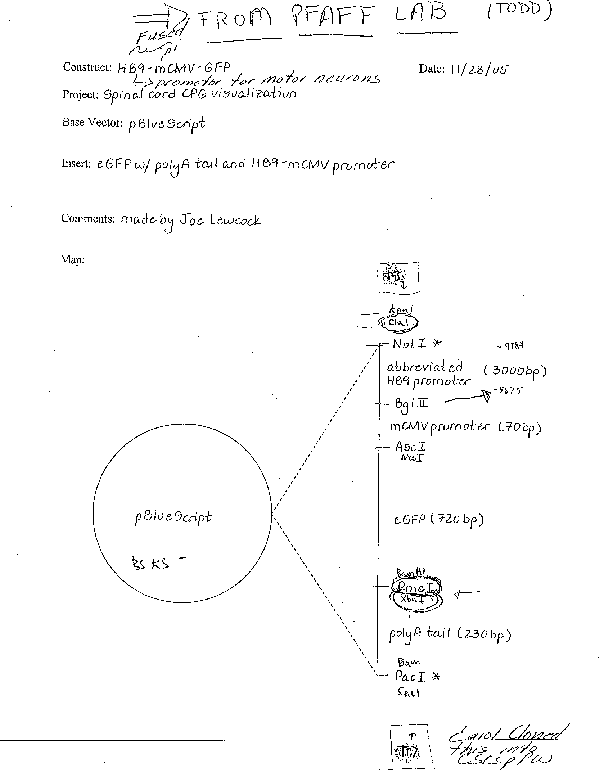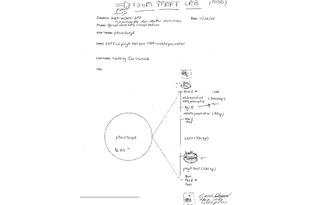-
Depositing Lab
-
Publication
-
Sequence Information
Ordering
| Item | Catalog # | Description | Quantity | Price (USD) | |
|---|---|---|---|---|---|
| Plasmid | 37081 | Standard format: Plasmid sent in bacteria as agar stab | 1 | $89 | |
Backbone
-
Vector backboneCSCspPW
-
Backbone manufacturerInder Verma lab
- Backbone size w/o insert (bp) 8466
- Total vector size (bp) 12486
-
Modifications to backbonenone
-
Vector typeLentiviral
Growth in Bacteria
-
Bacterial Resistance(s)Ampicillin, 100 μg/mL
-
Growth Temperature37°C
-
Growth Strain(s)Stbl3
-
Copy numberLow Copy
Gene/Insert
-
Gene/Insert nameHb9 RFP
-
SpeciesM. musculus (mouse)
-
Insert Size (bp)4020
- Promoter Hb9
Cloning Information
- Cloning method Restriction Enzyme
- 5′ cloning site ClaI (not destroyed)
- 3′ cloning site XbaI (not destroyed)
- 5′ sequencing primer GCTAGCTCCGGAGAGCAAAAGCTG
- 3′ sequencing primer TGTAATCCAGAGGTTGATTG
- (Common Sequencing Primers)
Resource Information
-
A portion of this plasmid was derived from a plasmid made byDr. Sam Pfaff
-
Articles Citing this Plasmid
Terms and Licenses
-
Academic/Nonprofit Terms
-
Industry Terms
- Not Available to Industry
Trademarks:
- Zeocin® is an InvivoGen trademark.
Depositor Comments
Expresses RFP under the control of the Hb9 promoter to visualize postmitotic human motor neurons
These plasmids were created by your colleagues. Please acknowledge the Principal Investigator, cite the article in which the plasmids were described, and include Addgene in the Materials and Methods of your future publications.
-
For your Materials & Methods section:
Lenti-Hb9-RFP was a gift from Fred Gage (Addgene plasmid # 37081 ; http://n2t.net/addgene:37081 ; RRID:Addgene_37081) -
For your References section:
Non-cell-autonomous effect of human SOD1 G37R astrocytes on motor neurons derived from human embryonic stem cells. Marchetto MC, Muotri AR, Mu Y, Smith AM, Cezar GG, Gage FH. Cell Stem Cell. 2008 Dec 4;3(6):649-57. 10.1016/j.stem.2008.10.001 PubMed 19041781







